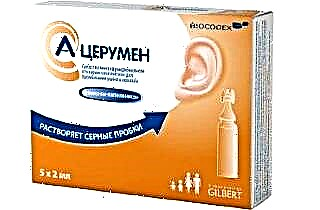The most common lesion of the palatine tonsils - inflammation of the tissue of these lymphoid formations is considered a classic tonsillitis, or classic tonsillitis.
To avoid taking unnecessary medications, get an idea of the essence of the disease and assess the need for an urgent examination of the patient by a doctor, you need to know the causes and main signs that characterize the inflammation of the tonsils in a child.
Why the tonsils get inflamed
The tonsils are part of the immune system. They are able to absorb bacteria and foreign particles, as well as tissue decay products that penetrate into the lacunar apparatus. There are paired and unpaired tonsils, the largest of which are the tonsils - the palatine tonsils, located between the palatine arches on both sides of the pharynx. They are clearly visible during pharyngoscopy (examination of the pharynx).
Inflammation of the tonsils in children occurs due to infection with viruses, bacteria, less often fungi, which occurs:
- exogenous;
- endogenous way.
The exogenous pathway is realized through an airborne mechanism, as well as through direct contact (for example, using shared towels, cutlery). Endogenous spread of infection is possible if the tonsils are already inflamed (chronic tonsillitis) or there are other foci of chronic infection in the oropharynx, nasal cavity.
Thus, the inflammation of the tonsils is due to the penetration of infectious agents into their mucous membrane.
Although infection is a provocateur of inflammation, in reality the degree of immune reactivity also matters. The body is constantly faced with infection, and if the immune system is strong, it successfully resists it. At the same time, inflammation is a defense response against a pathogenic agent. If the primary defense mechanisms did not work, and the pathogenic pathogen nevertheless penetrated the tissues and was not destroyed, the inflammatory process starts. In this regard, one should not forget about the contributing factors, the presence of which increases the likelihood of developing inflammation:
- Hypothermia.
- Tonsil injury.
- Foci of chronic infection.
- A sharp change in climatic conditions.
- Insufficient or unbalanced diet.
The most common causative agents of angina are viruses (adenoviruses, coronaviruses, Coxsackie viruses and ECHO), bacteria (beta-hemolytic streptococcus, staphylococci). In this case, beta-hemolytic streptococcus is the most dangerous in prognostic terms, since the infection caused by it is associated with numerous complications: glomerulonephritis, polyarthritis, rheumatism.
Symptoms
If the tonsils turn red, but there is no point, filmy or islet plaque on the surface of their mucous membrane, we are talking about catarrhal sore throat. This is the mildest form of classic tonsillitis, which in children is often combined with inflammation of the pharynx - pharyngitis. However, it is considered mild only in comparison with other options for the course of the disease. In young children, even catarrhal angina is painful, with a pronounced intoxication syndrome.
For catarrhal tonsillitis, the following symptoms are characteristic:
- acute onset;
- sore throat even with an empty throat;
- an increase in fever to febrile values (38–38.9 ° C).
In older children and adolescents, body temperature indicators in catarrhal tonsillitis can correspond to subfebrile values (37.1–37.9 ° C), and the disease is characterized by moderate intoxication, the general condition remains relatively satisfactory.
Children when interviewed may indicate symptoms such as:
- Weakness, headache.
- Dryness and irritation, tingling in the throat.
- Sore throat, worse when swallowing.
Palpation can reveal a slight increase and soreness of regional lymph nodes. With catarrhal angina, there is no swelling of the neck, head movements from side to side are not difficult, the focus of the lesion is precisely the palatine tonsils.
When assessing the condition of children, not only complaints are taken into account, but also objective general signs, since not every child (due to age) can tell about the symptoms that bother him. Patients suffering from catarrhal sore throat become capricious, may look drowsy, lethargic, they are not carried away by toys, and their appetite disappears. Sometimes, due to severe pain, children refuse even liquid food and water. If severe intoxication is present (vomiting, upset stools), there is a risk of dehydration.
If the child has inflamed glands, then the catarrhal form of angina can be replaced by follicular or lacunar.
If, with a catarrhal form, the lesion is superficial, and only the mucous membrane is involved in the pathological process, the lacunar and follicular forms are characterized by the accumulation of purulent exudate in the lacunae and follicles of the tonsils, respectively.
These types of angina are characterized by a severe course, a high risk of complications in children of any age.
Pharyngoscopic picture
 The pharyngoscopic picture is understood as the characteristics of the mucous membrane of the pharynx and tonsils, which are revealed during an objective examination. Pharyngoscopy is the simplest diagnostic method that allows you to compare general symptoms and complaints with the signs of changes seen, to confirm or deny the diagnosis of angina.
The pharyngoscopic picture is understood as the characteristics of the mucous membrane of the pharynx and tonsils, which are revealed during an objective examination. Pharyngoscopy is the simplest diagnostic method that allows you to compare general symptoms and complaints with the signs of changes seen, to confirm or deny the diagnosis of angina.
In the case of catarrhal sore throat, one can see:
- redness and swelling of the tonsils, arches;
- slight increase and loosening of the tonsils;
- dryness of the mucous membrane of the tongue, a whitish coating on its surface.
The leading signs are redness and inflammatory edema, due to which the tonsils become somewhat larger. If the child's tonsils were large before the onset of symptoms of tonsillitis (hypertrophy), then on examination they are significantly enlarged, look like oval protrusions on both sides of the pharynx.
In the classic form of tonsillitis, the palatine tonsils can only become inflamed on both sides. In some cases, at the beginning of the disease, a difference in changes on the left and right tonsils is allowed - lacunar or follicular tonsillitis on the one hand and catarrhal on the other. Usually, the process soon becomes purulent in both glands.
Inflamed tonsils in a child are painful, but pressure on them with a catarrhal form does not lead to the release of pus. Also, there are no plugs in the lacunae of the tonsils, which could indicate the chronic nature of the inflammatory process (chronic tonsillitis).
Dryness of the tongue and a loose, whitish or yellowish coating on its surface is not a specific sign of tonsillitis, but rather characterizes the presence of an inflammatory process in the oropharynx and an increase in body temperature. The same plaque can appear in many infectious diseases (for example, with pharyngitis); its detection is not necessary to establish a diagnosis of classic angina.
A feature of the isolated course of angina is the absence of edema and redness of the mucous membrane of the pharynx, soft palate.
If these areas are nevertheless affected by the inflammatory process, they also speak of the presence of pharyngitis.Tonsillopharyngitis, a combination of sore throat and inflammation of the pharynx, is common in young children. Partial edema of the soft palate with angina can be observed in young children.
Diagnostic features
Differential diagnosis is the prerogative of the doctor, who, in the process of its implementation, assesses the complaints, the data of an objective examination, combining them into a general picture. Nevertheless, parents and other adults who care for a child need to be able to distinguish between classic sore throat, ARVI (acute respiratory viral infection) and sore throat with diphtheria - it is enough to at least suspect the diagnosis in order to prevent a serious threat to the little patient in time.
It is believed that bacterial sore throat is distinguished by the absence of a pronounced rhinitis, whereas in young children, sore throat is usually caused by rhinopharyngitis, an inflammation in the mucous membrane of the nasopharynx. If, when examining the child, it is difficult to breathe through the nose due to edema, there is abundant discharge from the nose, the back wall of the pharynx is mainly reddened, and not the tonsils - with a high probability the patient does not suffer a sore throat, but ARVI (acute respiratory viral infection). It is worth remembering that with ARVI, both the arches and the tonsils turn red only at the edges. There are no raids on their surface.
Comparison of the symptoms of diphtheria and classical angina is advisable in the lacunar form - at the same time, diphtheria can begin as a common tonsillitis, and characteristic plaques appear only after 2-3 days. Therefore, if the inflamed glands in a child with subfebrile fever are covered with overlays of a dirty yellow or gray color, which extend beyond the tonsils, are removed with difficulty, and the mucous membrane bleeds after removing plaque, the likelihood of diphtheria should be considered and urgently consulted a doctor. It is important to know that a runny nose with diphtheria of the oropharynx, as a rule, does not happen.
Redness of the tonsils, which gives reason to think about sore throat, is an unconditional indication for a visit to the doctor. The child does not need emergency care (if there is no hyperthermic syndrome, unbearable pain, repeated vomiting), but a routine consultation with a pediatrician in a polyclinic is required to confirm the diagnosis and prescribe therapy. In some cases, treatment is required in a hospital setting. With the bacterial etiology of angina, antibiotics cannot be dispensed with.

 The most common lesion of the palatine tonsils - inflammation of the tissue of these lymphoid formations is considered a classic tonsillitis, or classic tonsillitis.
The most common lesion of the palatine tonsils - inflammation of the tissue of these lymphoid formations is considered a classic tonsillitis, or classic tonsillitis.

